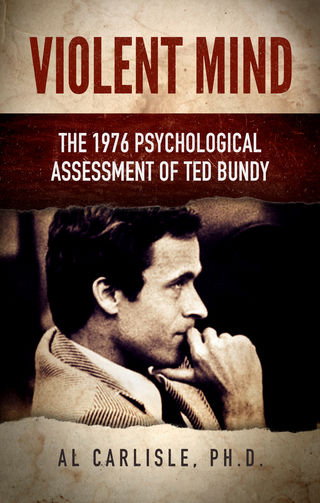Fantasies
The Psychologist and the Serial Killer
A prison psychologist provides his full assessment of Ted Bundy.
Posted October 23, 2017

Before anyone realized that Ted Bundy would be among America’s most notorious serial killers, he was arrested in Utah in 1975 for suspected burglary. When it was clear that he’d allegedly attempted to kidnap a young woman, he went to trial and was convicted. To determine his placement, Bundy was scheduled for evaluation. Specifically, prison psychologist Al Carlisle had to decide whether Bundy posed a danger for future violence. In his new book, Violent Mind, Carlisle lays out the steps he took to make this determination.
Predictions about future dangerous behavior are difficult to make beyond a few days. Psychologists are not clairvoyant, but they can provide informed estimates about whether someone is likely to act out. There are several standardized instruments for assessment, yet among the hindrances to using them effectively are the secrets that dangerous people keep.
Among the factors that are most potent for violence are being male, having a prior record of aggression, physical abuse in childhood, having a substance-abusing parent, having a diagnosis of an adjustment disorder, evidence of psychopathy, a paranoid attitude, and fantasizing about harming others.
Carlisle found Bundy easy to talk to, but evasive. Interviewing people who knew him, Carlisle discovered that he lied easily, broke rules, committed thefts, and shifted his personality like a chameleon. Those people who saw his dark side had plenty to tell. As Carlisle worked his way through his evaluation, the red flags mounted. Even Bundy’s responses to his questions were illuminating, including his contradictions and the holes he left for specific time periods.
Among the most interesting items in this book are narratives from Bundy’s former girlfriends, including those with whom he was cheating on a primary girlfriend. He was anything but the suave persona he liked to present.
A few years ago, Carlisle had published a two-part fictionalized version of this in a prior book, I’m Not Guilty, but here he shows the steps involved in his actual evaluation, along with his thoughts as he interprets the results. The basic tests failed to pick up signals for dangerousness, but Carlisle’s clinical experience told him that something was off about this inmate.
“I spent about 20 hours with Bundy on the psychological assessment,” Carlisle told me. He described how Bundy had used charm and friendliness to hide his anxiety and anger. Having taken psychology courses, Bundy knew what Carlisle’s questions meant and he disliked being evaluated. But Carlisle had done his homework, collecting impressions from many of Bundy’s associates. Some said he was intelligent, achievement-oriented, and a nice guy, but others had spotted him as a phony—possibly a dangerous one.
Among the items Carlisle used was the Thematic Apperception Test, a projective test that offers a series of ambiguous images to trigger subconscious themes in the narratives the subject makes up. Bundy’s answers suggested themes consistent with items of concern that Carlisle had picked up in his interviews. In the end, he advised that Bundy go into a medium-security unit. When it grew clear that Bundy might be planning an escape, he went into maximum security.
This book presents Carlisle’s report to the court, which includes the impressions of other psychologists who also evaluated him. Carlisle describes how Bundy responded to his report, further conversations they had, and an intriguing letter that Bundy once wrote to him. Carlisle also adds an article he’d published based on what he’d learned from his prison interviews about serial killers.
Using Bundy as one of the models, he proposes that the ability to repeatedly kill and also to function as a seemingly normal person developed through the evolution of three primary processes:
1) Fantasy – the person imagines scenarios for entertainment or self-comfort
2) Dissociation – the person avoids uncomfortable feelings and memories
3) Compartmentalization – the person relegates different ideas and images to specific mental frames and keeps boundaries between them
Bundy presented a public persona that appeared adaptive and reliable but also nurtured a dark side that included fantasies about rape and murder. He’d been humiliated in childhood, feeling left out and awkward, so he’d used fantasies to comfort himself. This activity helped him to develop an alternate identity that felt more powerful. He read true crime and porn, and crept around at night to peep in windows. His brutal side gained traction with mental rehearsal.
“Compartmentalization is a process that all of us can engage in to one degree or another,” Carlisle told me. “It’s a complex state of mind on a continuum that can vary from a healthy level, such as with an actor who rehearses a script so intently that when portraying that role on stage or in a film he has a deep sense of being that person. At the other end of the continuum is a very destructive process that can result in violence.”
The book, Violent Mind, is a fascinating read, for both process and product. Carlisle doesn’t over-reach as others have done by proposing causes for Bundy’s violence for which there is only speculation. Instead, he provides what he learned from actual interviews and test results. Like my experiences with Dennis Rader, who began killing around the same time and who followed Bundy’s story, there are no simple formulas here. It’s valuable to have the raw data to ponder.
References
Carlisle, A. (2017). Violent Mind: The 1976 psychological assessment of Ted Bundy. Encino, CA: Genius.




